We work with major retailers across the globe and one of the common themes in our discussions last year was how to approach their volume hiring strategy in the Covid-19 reality to make their processes more efficient and streamlined.
Our clients handle large volumes of applicants, and after Covid hit, they’ve seen their candidate numbers going up from hundreds to tens of thousands per month.
Not only did this accentuate the known challenges – high employee turnover rates, time-consuming selection procedures and a not-so-ideal job application experience, but also brought to light a series of issues that before Covid didn’t seem that urgent.
Let’s dive into the volume hiring world and see what changed and which trends will shape retail recruitment in 2021.
What’s in?
The state of high volume retail recruitment before Covid-19
When it was clear that the effects of Covid-19 will not go away and that we’ll need 1-2 years to fully recover from this pandemic, retail leaders started to look at the big picture again and to identify those steps that were slowing down their recruitment process.
Aspects like having the overview of candidates applying across locations, rerouting applicants from one store to another, or automatically scheduling interviews with the selected candidates were all nice-to-haves before the pandemic.
The adoption of technology and the digital transformation of retail recruitment were seen by many as nothing but buzzwords.
Today, digital acceleration is the most discussed topic in retail hiring, especially because of the increasing volumes of applicants and online orders.
Retailers need to accelerate their recruitment digitization
Retail happens to be one of the most innovative industries when it comes to embracing new technologies. To give you just some examples: retail invented self-checkout and is experimenting with auto-checkout through facial recognition.
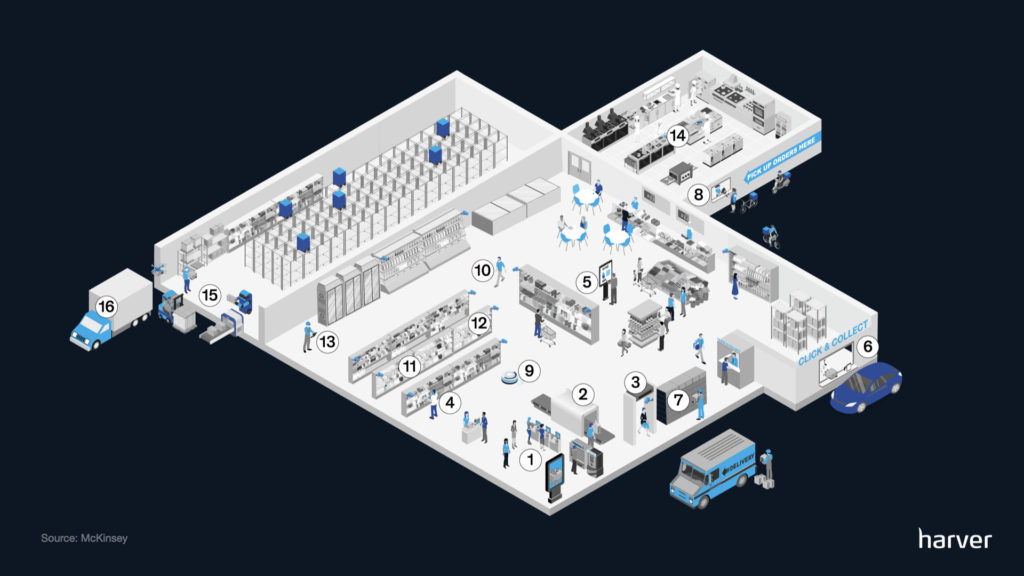
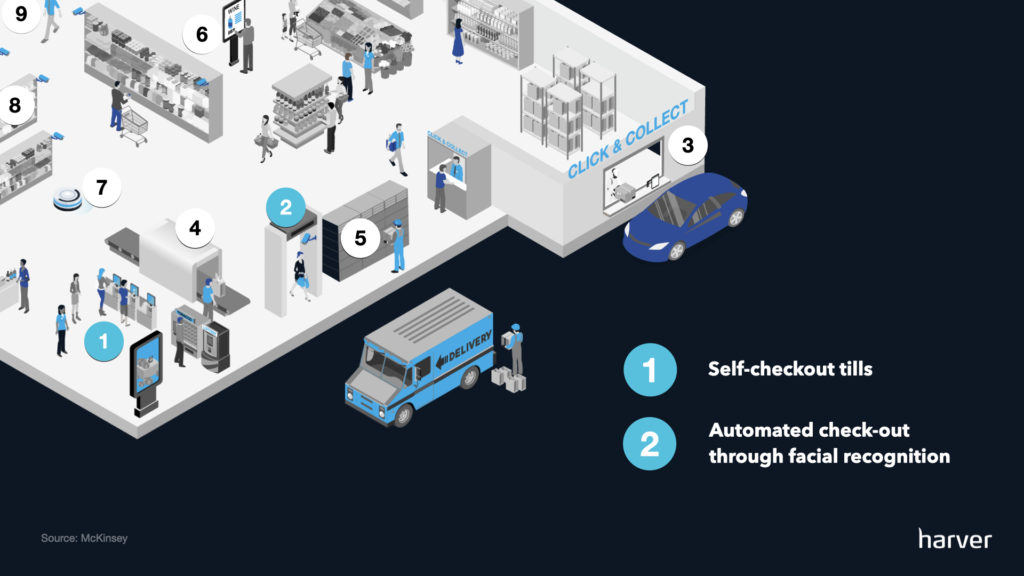
Inventory control automation also started in retail; stock is counted automatically and purchase orders are made, picked, packed, and shipped with almost no human interference.
Retailers lead the way when it comes to innovation and technology adoption, except for one area: their recruitment strategy. Some of the processes haven’t changed in decades.
Surely, there are some improvements in the way candidate selection is handled; automated assessments are common in high volume hiring, for example.
But the real question is whether these small steps bring a fundamental change to retail recruitment. Are these changes enough for the reality that we’re facing today, in the post-pandemic world?
A study by McKinsey that looked into digitization across industries showed that retail invested in innovative physical assets and that business processes and customer interactions have gone completely digital.

But now if we zoom into the labor part of business, there has been little to no innovation. And if you start comparing retail to other industries, the difference is undeniable.
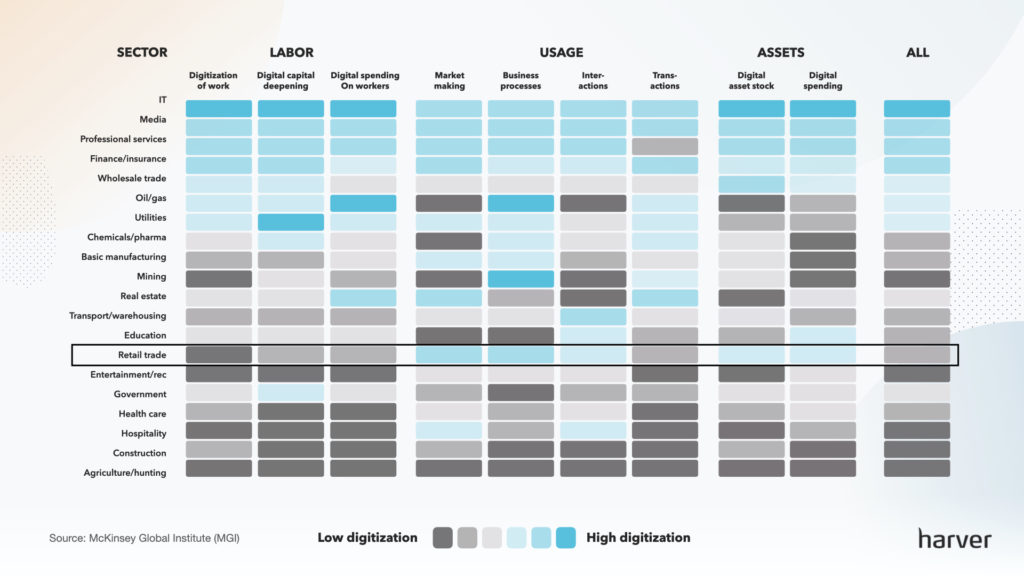
At Harver, we work with companies that have high-volume, low-complexity jobs across different industries. When it comes to hiring, other industries are paving the way and changing the way they hire through technology adoption.
We believe it’s time for retailers to join the movement!
Up until last year, it was fine to do things the way you always did them. The old recruitment processes were fine, but now with candidate volumes going through the roof, you can no longer ignore digitization and the benefits it can bring to retail volume hiring.
So let’s now look at the three trends that forward-thinking organizations have embraced in 2021. These trends have proven to be successful in other industries and we believe they will shape volume hiring in retail as well.
Top 3 trends for retail volume hiring in 2021
Trend no. 1: Recruitment agility
If 2020 taught us one thing, is that things can change overnight and there are a lot of factors at play that are impossible to control.
The retail market is volatile, so that’s why the most important trend for this year is recruitment agility. Retailers need to be prepared to respond and adapt to whatever comes their way.
For multi-location retailers, there’s an additional complexity layer, which is caused by the false presumption that there is only one labor market. In reality, if you have 1000 locations, you might be dealing with 100 different labor markets.
Supply and demand differ per area. Unemployment rates differ not only per state but also per city and neighborhood, so the labor market is not homogeneous.
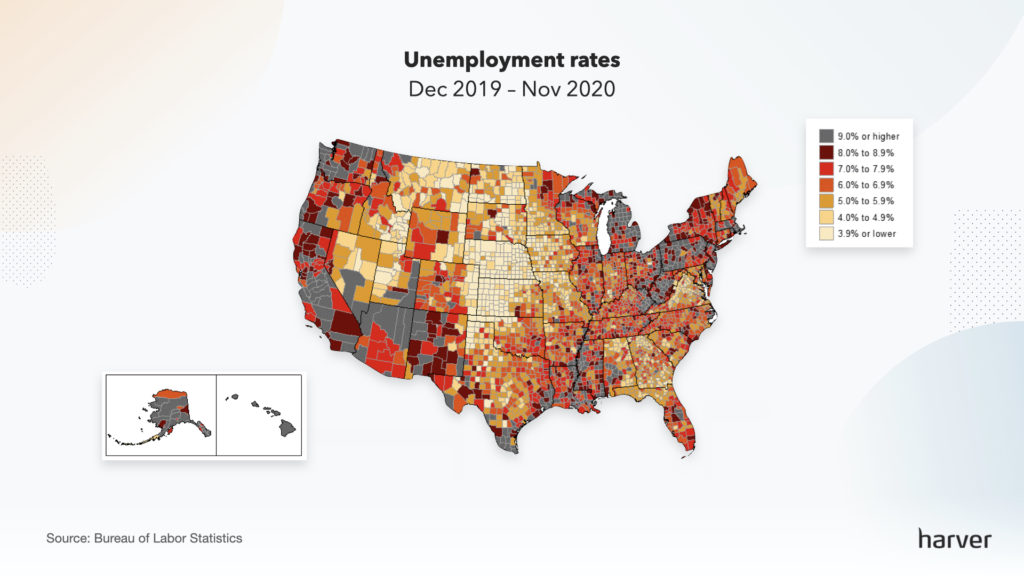
So we know that the market conditions vary and can be loose or tight. The recruitment process unfortunately is the same, even for big retailers, regardless of the market state. The more decentralized an organization is the more issues this causes.
In 2021, retailers who want to scale and improve their operations must be prepared to adapt and must have a strategy in place that allows them to be one step ahead of the market changes while serving multiple local realities.
But how do you start creating an agile high volume recruiting process?
Let’s look at two opposite ends of the spectrum: in a slack market, you can filter and select only the best candidates, while automating all the steps for non-fitting applicants.
In a tight market, you don’t want to waste time. You need to move fast when there’s a shortage of talent, so you need to automate in order to get the candidate first and maximize the utilization of the talent pool.
Can one technology serve both realities?
First, let’s look at matching: in the slack reality, matching is strict and only the best candidates go through. But when there’s a shortage of candidates, the system adjusts to accept also medium-qualified candidates or remove some of the restrictions regarding the hourly availability.
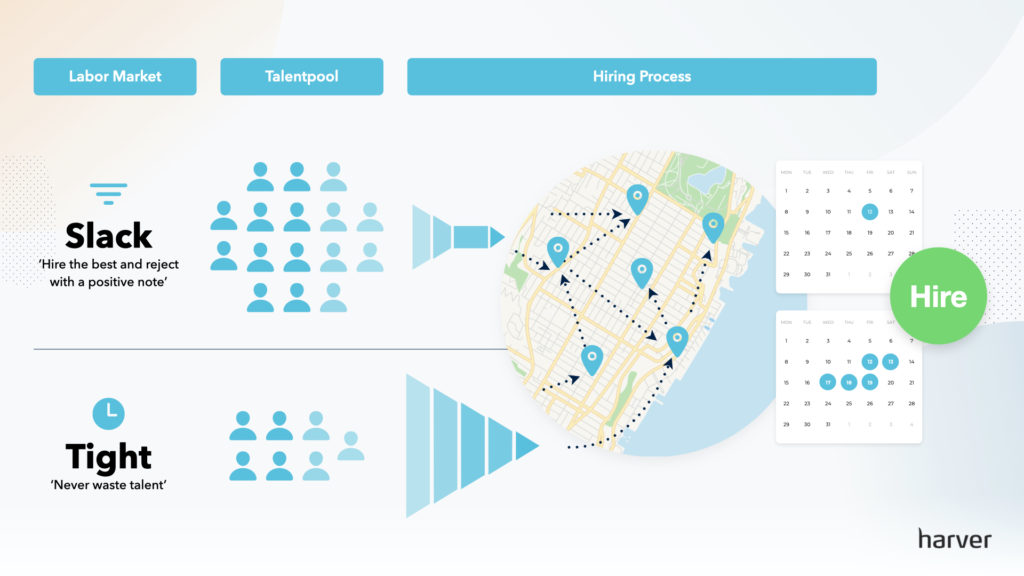
The same goes for interview scheduling: in the slack reality, interviews are planned when it’s the most convenient for store managers. In a tight market, however, interviews can be scheduled immediately, right after the applicant finishes the assessment, to not lose a qualified candidate.
Moving to the next step: routing. In retail, locations with a small pool of candidates are often physically close to locations with a shortage of applicants. It’s a logical consequence of the fact that applicants in retail jobs tend to apply in their own neighborhood.
With the proper technology in place, you can handle this challenge effectively.
A practical example of end-to-end digital hiring in retail
At Harver, we’ve introduced routing technology that allows you to balance the volumes of applicants between locations and reroute them without your store managers having to look into the needs of all your locations.
This is done automatically, in a split second, and the system takes care of the entire process and communication. So you get more efficient recruitment, shorter time to hire, and better visibility into the full high volume recruiting process.
Here’s what end-to-end digital hiring looks like at Aldi, one of our retail clients. They moved from a manual process to a completely automated, digital approach.
Harver provides an integrated tool for mass hiring in retail, so this means that we collect a single stream of structured data which is presented to the employer in a BI environment.
The data is collected in real-time so headquarters can see how their recruitment process goes and monitor all important metrics. At the same time, the dashboard gives recruiters direct insights into the performance of the digital strategy implemented by Harver.
If you’d like to see how Haver can transform your hiring process,
book a demo here!
Trend no. 2: Empowering store managers
Going through a global pandemic changed the lives of store managers completely. They were the ones in the front lines and suddenly had to guide staff who was not prepared for the new reality.
In 2021, store managers will be key players in driving retail businesses forward.
Historically, store managers had to divide their attention and time over a wide range of tasks, from inventory management and stock control to store promotions, staffing, managing budgets, training new employees and driving revenue.
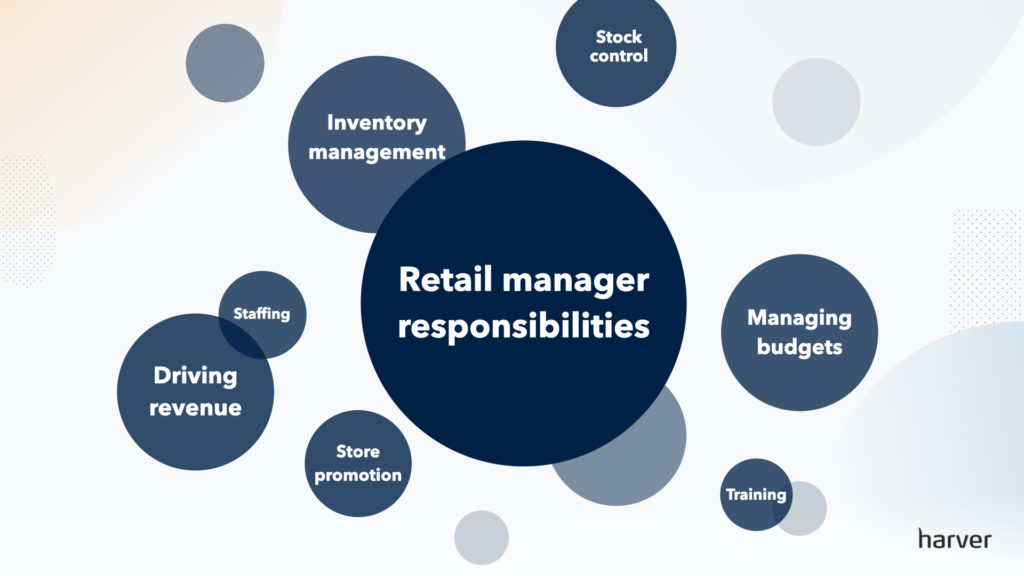
This role is now evolving, as certain processes – such as inventory management – are now automated; and it makes sense, as store managers should be driving revenue instead of being busy with admin tasks.
But recruiting new employees falls under the same category of administrative processes that can and should be automated. Of course, you don’t want to take the human component out of recruitment completely, but the current processes are simply inefficient for a lot of retailers.
The hiring process is a long chain of laborious, time consuming and repetitive manual tasks.

Tasks like scanning a resume, calling candidates who don’t pick up, sending multiple emails to schedule an interview – these are all recruitment responsibilities and they have to be done, but your store managers are not recruiters.
Retail – most of the time – is a decentralized reality, but this doesn’t mean that store managers have to do everything by themselves. Here’s what the recruiting process should look like for them.

Applicants come in through multiple channels, but they’re centralized into one place, one system. Then auto-matching happens: it’s the matching methodology that we described in the first trend.
Candidates are automatically scored against benchmarks for a particular set of skills that are needed for a retail job. Only the best matches advance to the next stage: auto-scheduling.
Store managers simply set their availability and candidates are scheduled for interviews without any call or email chain in between. Then comes the interview itself: all that the store manager needs to do is open his or her calendar in the morning and see what interviews are scheduled for the day.
They can see the candidates, how they scored in the assessments, what the candidate’s strengths are, what questions would be valuable to dive deeper into, their resume, and so on. The entire candidate profile, skills, scores are in a centralized view.
The store manager has all information available so they don’t even need to touch the ATS at all. After the interview, when they have to make the decision of hiring the applicant or not, all they need to do is open an app and click on a button to send an offer.
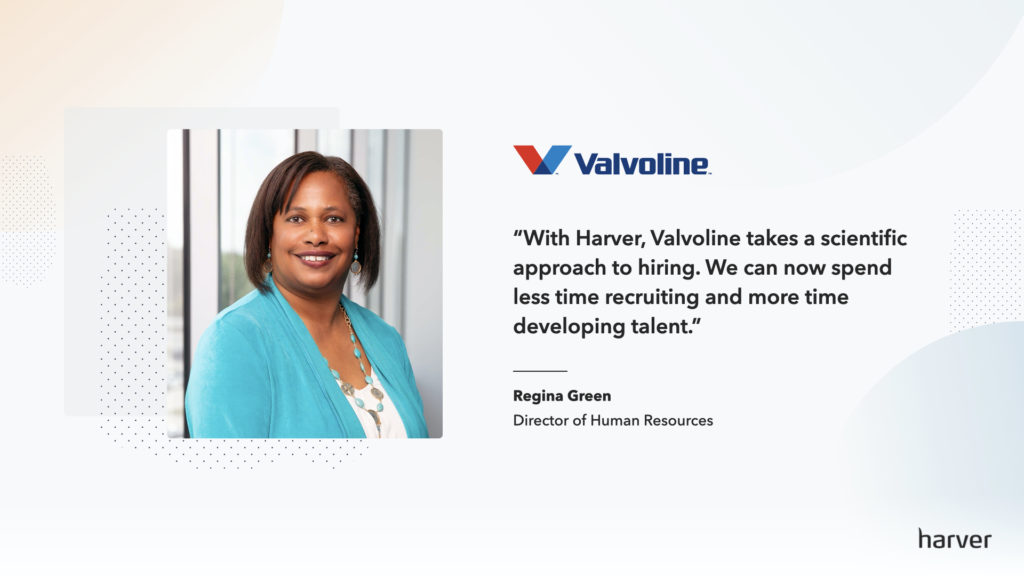
This is what a fully digital, almost fully automated journey can look like. This empowers store managers not only to work more efficiently but also to hire faster and better by removing bias from the recruiting process and choosing applicants who are likely to succeed in the role.
Store managers can offer candidates job security in less than 24 hours.
Like what you see?
Don’t miss out. Subscribe to our quarterly digest to get the latest TA and TM resources delivered right to your inbox.
Trend no. 3: Two-way matching
This trend is all about new ways of assessing and matching applicants to retail jobs. A key step in any talent matching framework is to identify the characteristics that are predictive of success in the specific role.
For retail service jobs, there are some characteristics to look for in your hires, such as:
- Dependability,
- Interpersonal skills,
- Customer service skills,
- Sales skills,
- Time management
No matter the type of retail job that you’re looking to fill, whether it’s the people who stock the shelves or the store associates, you should always start by identifying the key characteristics leading to success in your specific organization. From there, you can build a matching framework to help you find qualified people for the role.
Today we won’t go too deep into how to set up a matching framework. Instead, we’ll focus on how you can use assessments to help address a major challenge that we see affecting the retail industry in particular.
When we talk to retailers, the number one issue mentioned, again and again, is not that they’re not finding enough high-performing people; the main challenge is the high turnover rate.
There are two main causes behind the high employee attrition in retail jobs:
- Candidates are not qualified for the job, or
- There’s a misalignment in expectations because applicants don’t fully understand what the job is about and how the day-to-day reality looks in a retail position.

People leave prematurely because they don’t like the job, or the job is not what they were expecting. And this is something that retailers struggle to figure out: how do you bridge this gap and attract applicants who are less likely to leave?
We’ll walk you through how you can use assessments not only to get applicants that are qualified for the role, by assessing their key skills and characteristics but also to address the turnover issue that comes from the misaligned expectations.
It’s common for retail candidates to imagine that the job is different from what it is in real life.
Offering candidates a realistic job preview during the application process is the best way to make sure that they understand what the role entails and that they can filter themselves out if they expected something else.
There’s a time for realistic job previews, and it’s not during the on-site interview
Many of you surely have some sort of job preview incorporated into the recruitment process. Maybe it’s during the on-site interview when you show candidates the store and answer their questions.
But if we look at the retail candidate journey, that’s quite late in the process.
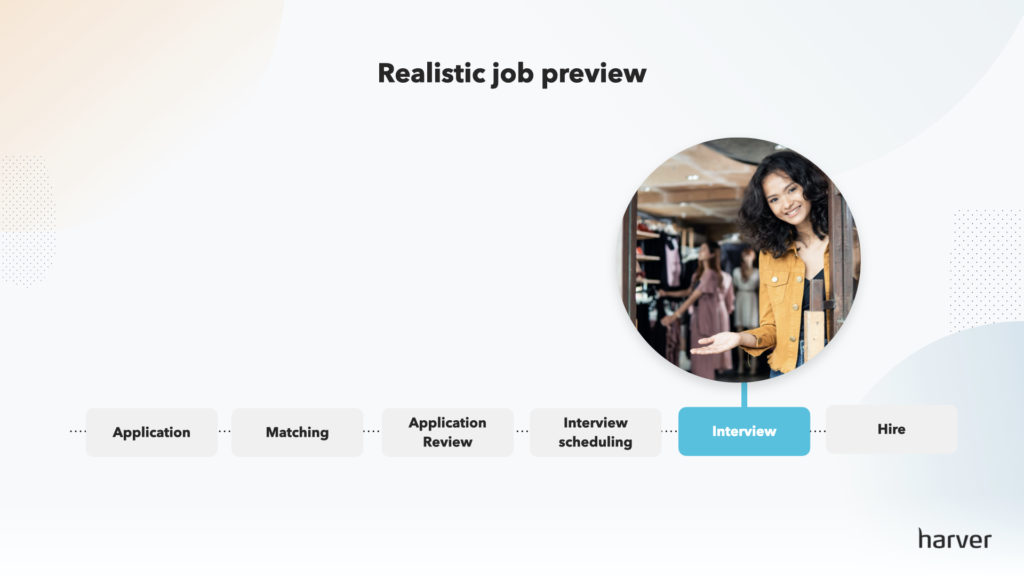
For you, it means that your store managers have already put time and effort into:
- selecting candidates,
- matching them to the roles,
- reviewing the resumes of the selected ones,
- scheduling interviews, and
- interviewing some of them
For the candidates, this means that they’re very close to getting a job. Retail applicants typically care less about career projections and more about getting hired, so when a candidate meets the store manager, there’s this psychological effect called “fear of rejection“.
The applicant focuses not on evaluating the opportunity and figuring out if it’s really the right fit for them, but on not getting rejected.
By showing the realistic job preview so late, you’re missing out on this key aspect which is allowing candidates to assess the actual jobs and opt out if it’s not really aligned with their expectations.
What we see from our retail clients is that this can be done the most effective when the realistic job preview is incorporated into the assessment and matching step of the hiring process.

This results in what we call a two-way matching framework. This allows both parties to assess the match, the characteristics of the jobs and the skills needed.
Moreover, it enables you to assess how applicants handle the critical incidents commonly faced on the job. The realistic job preview shows them the actual tasks that they’ll have to perform, the work culture, the environment they’ll work in, the difficult situations they’ll have to deal with.
The RJT can be combined with a test validated to assess key behaviors, such as a situational judgment test. SJTs simulate realistic work situations and ask the candidates to select the best and worst answers in different scenarios.
This type of pre-employment assessment is one of the most important predictive methods in applied psychology so it’s worth reviewing your process and seeing if you can incorporate it into your recruitment flow.
Realistic job previews can include videos, simulations of common situations with multiple answer options, critical incidents such as handling a busy store or a difficult client.
To get started with two-way matching:
- Identify and measure the characteristics that are predictive of success
- Offer a realistic job preview
- Enable self-selection
- Implement a situational judgment test (SJT)
This framework helps you hire better candidates, reduce turnover rates and take some of the workload off your hiring or store managers.
- White paper
Before you continue!
Don’t forget to grab your free copy of our new white paper on the digital transformation of retail volume hiring. Learn about:
- The challenges currently shaping the retail volume hiring space
- How to align your recruitment strategy with today’s reality by adopting technology
- The four building blocks of a fully digital recruitment process

Start your retail recruitment digital transformation
To sum this up, the key trends that will shape retail mass hiring this year are:
- Recruitment agility
- Two-way matching
- Empowering store managers
High volume retailers need to have a strategy in place that adapts to regional differences, enables them to work more efficiently and to balance applicant flows between locations, and empowers them to select the best candidates through realistic job previews.
This is not a far-away dream that just sounds good on paper, it’s the reality of multiple retail leaders who are already using the Harver solutions to digitally transform their high volume recruiting processes.
Here are some of our results.
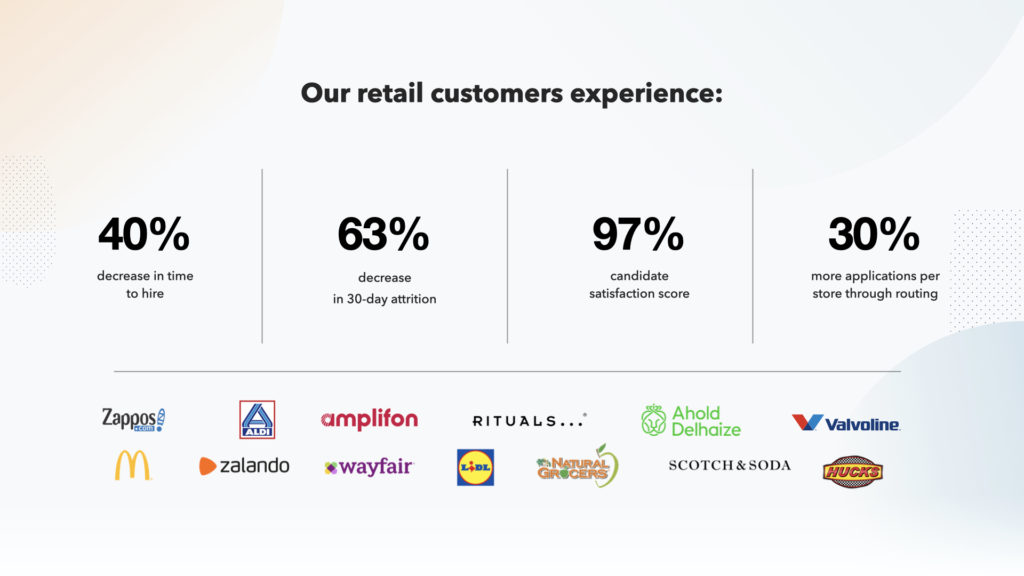
Harver is the market leader in volume hiring. Our software enables end-to-end digital transformation, turning the hiring process into an experience that’s fast, friendly and fundamentally fair.
Ready to transform your hiring process?


